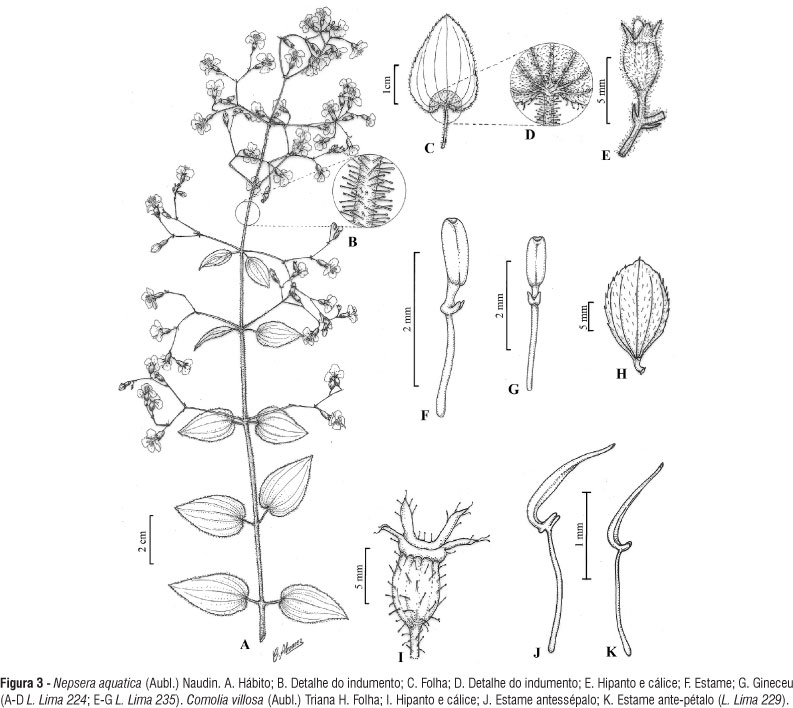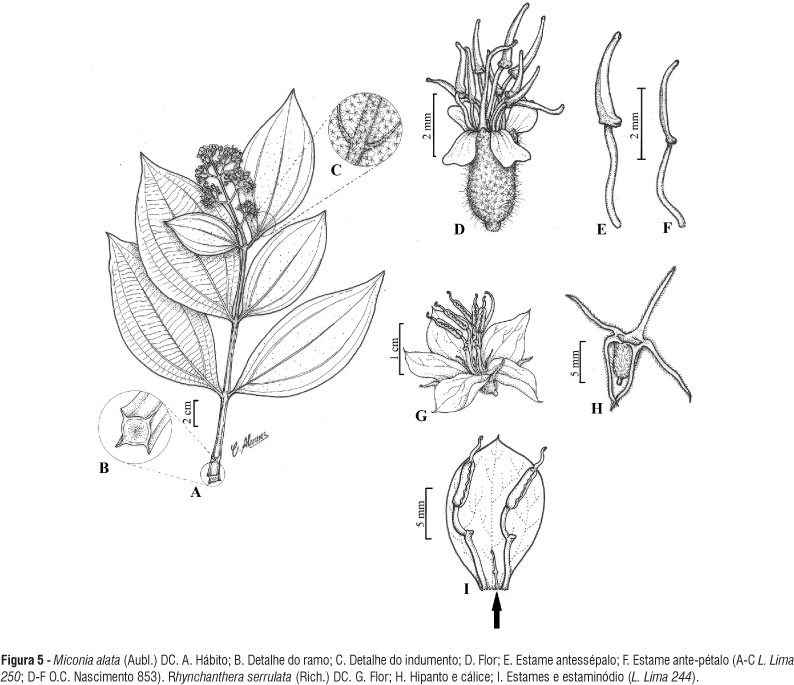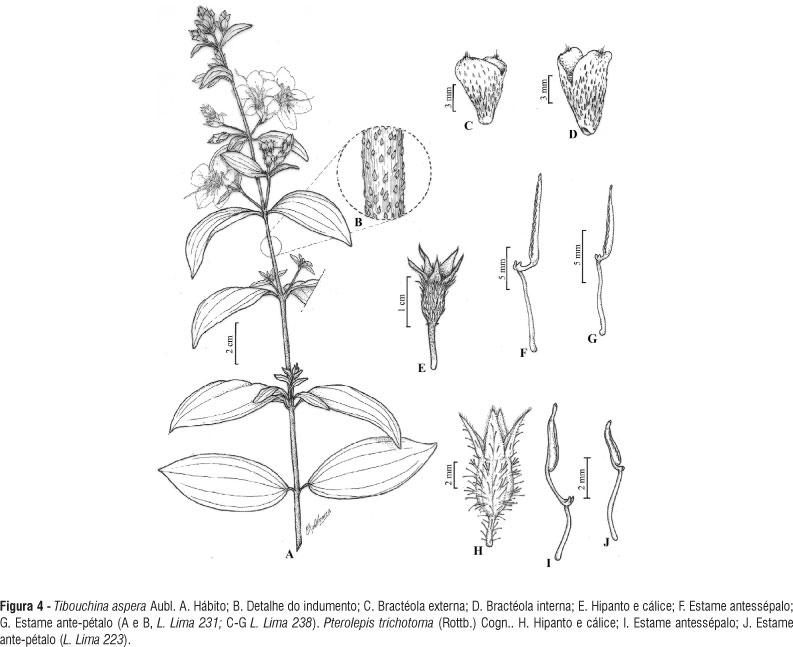Sandy coastal vegetation ("restinga") is composed by a complex of plant communities occurring on quaternary plains under marine influence. The Brazilian Amazon biome is the second richest in Melastomataceae in the country. This family is represented by 47 genera and 487 species. This study aimed to know the diversity of Melastomataceae in different vegetations in the landscape of coastal marshes. The survey was conducted in the herbaria IAN (Herbário da Empresa Brasileira de Pesquisas Agropecuárias) and MG (Herbário do Museu Paraense Emílio Goeldi), and field work in the cities of Bragança, Maracanã and Marapanim, all of them in the North Brazilian State of Pará. A taxonomic treatment with descriptions, illustrations, geographical data, identification key for the recognition of species and comments on morphological characteristics are presented. The family is represented in sandy coastal of Pará by the following species: Acisanthera bivalvis, A. crassipes, Comolia villosa, Miconia alata, Mouriri brachyantera, M. guianensis, Nepsera aquatica, Pterolepis trichotoma, Rhynchanthera serrulata, and Tibouchina aspera. These species occur mainly in herbaceous marshes, dunes, fields between dunes, open shrubby fields, and sandy coastal forests. Miconia alata is a new record for the sandy coastal environment in Pará. The study revealed that the sandy coastal vegetation of the municipalities Maracanã and Marapanim concentrate 80% of the studied species. In this study we recognize that none of these species can be characterized as endemic, as they are all found in other ecosystems or vegetation formations in Brazil.
Amazônia; Myrtales; Taxonomy; Vegetation







